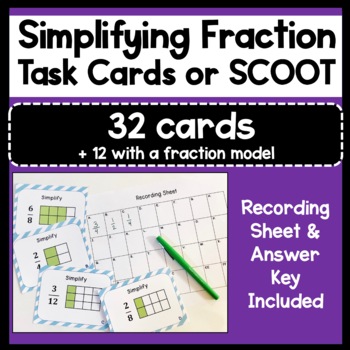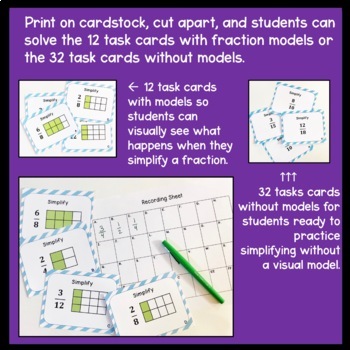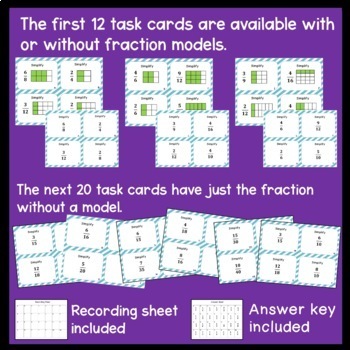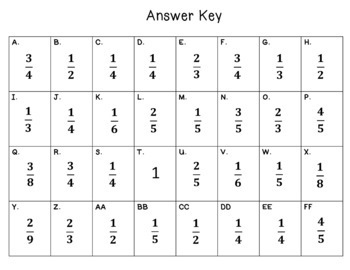- PDF
Description
Use these free fraction task cards in math stations, as an exciting Simplifying Fraction SCOOT game, or for an around the world activity with your students. These fraction task cards contain 32 different fractions to simplify. There are 44 task cards in all, because the first 12 cards include a fraction model and are repeated without the fraction model.
A student recording sheet and answer key are included.
Cut apart, laminate, and use in many different ways!
Ideas for use are included on the first page of this resource.
You may also be interested in these other fraction resources:
Simplifying Fraction Boom Cards
Identifying and equivalent fraction Memory Games
Equivalent Fraction worksheets with models
If you've found this free resource useful, I'd appreciate if you took a few seconds to review it. Click here, select "Free Downloads," then click on "Provide Feedback"





